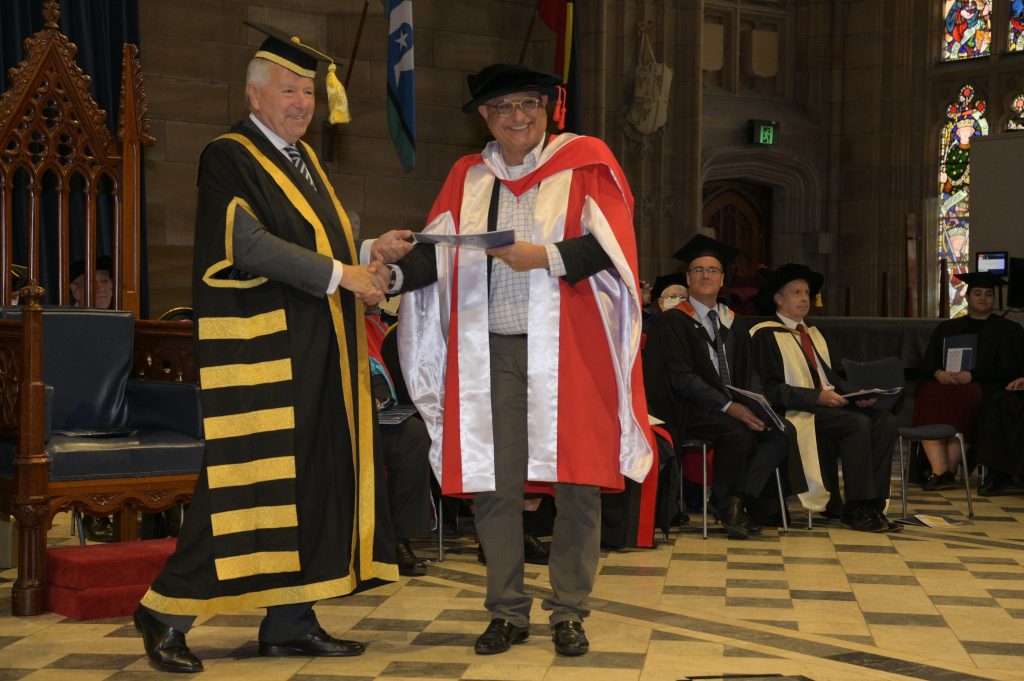 Father Matta al-Miskīn’s Commentary on Saint John’s Gospel (Introductory Volume)
Father Matta al-Miskīn’s Commentary on Saint John’s Gospel (Introductory Volume)
Thematic Considerations
3 The Witnesses
by Wagdy Samir
After exploring the topic of truth in Father Matta’s introductory volume on the Gospel of Saint John, I consider a related theme, the Church’s witnessing to the truth. According to him, John presents seven types of witnessing to the truth.
First, we have the Father who “has testified” of the Son (John 5:37) and “bears witness” of him (John 8:18). This witness provides a permanent and continuous witness, for humankind to believe in the Father and the Son, rather in the “eternal and intimate divine relationship between the Father and the Son.”
Second, the Gospel depicts Christ’s own witness of himself (John 8). Since Christ comes from above (John 3:31), his testimony is identical to the Father’s, revealing that “they are of the one being and will.” It is due to this identity that Christ’s witness of himself is a true testimony (John 18:37).
Third, Christ’s works bear witness for him (John 5:36,37), insofar as “Christ’s works are those of the Father” (John 5:17). Father Matta adds that believing in the works of Christ grants believers to perform Christ’s works (John 14:12,13). This amounts to personal transformation: “they who believe in the Son of God have the witness in themselves” (1 John 5:10), thus receiving eternal life.
Fourth, the Scriptures bear witness of the Son (John 5:39,40). Thus, “the old testament did not cease with the advent of Christ; instead, Scripture’s role as an educator comes to an end only to begin its role as a witness to Christ.” Since Christ did not come to destroy the law, but to fulfil it, in Christ’s fulfilment the role of the Scriptures is “everlasting,” granting humankind grace and truth (John 1:17).
The fifth witness is Saint John the Baptist (John 1:6,7,22,32). The Gospel depicts the role of the Baptist as revelatory; he “was the burning and shining lamp” (John 5:35), guiding those who sat in darkness to the true light, Christ.
Sixth, the Gospel highlights the disciples’ witness (John 15:26,27). Father Matta points out that this is the only instance in John where Christ seeks the testimony of his disciples (and the believers). Indeed, Saint John the Evangelist and the other disciples have fulfilled Christ’s request: “And he who has seen has testified … This is the disciple who testifies of these things” (John 19:35; 21:24).
The seventh and final witness is the Holy Spirit (John 15:26; 16:13). All the other testimonies needed the Holy Spirit in order to reach the hearers. Father Matta justifies this point by referring to the Baptist’s words, “I did not know him, but he who sent me … said to me, ‘Upon whom you see the Spirit descending’” is the one (John 1:33). In this light, “the Holy Spirit inaugurated the witnessing to Christ as the incarnate ‘Truth’ who is to come into the world.”
In summary, witnessing in Saint John’s Gospel can be depicted as a “living fabric with its seven threads, beginning with the witness of the Father, and ending with the witness of the disciples supported by the Holy Spirit.” As we shall see in subsequent articles, ultimately, the Gospel points to witnessing to Christ as the true light and glory.
Source: Matta al-Miskīn, Introduction to the Commentary of the Gospel of St John: Study and Analysis (Al-Madkhal li-Sharḥ Injīl al-Qiddīs Yūḥanna: Dirāsah wa-Taḥlīl) (Cairo: Monastery of St Macarius, 1989) 112-118.
17 July 2022 © AIOCS
AIOCS LTD is a not-for-profit charitable organisation that promotes the study of Orthodox Christianity, Eastern and Oriental, in Australia
For donations, please go to https://www.paypal.com/paypalme/aiocsnet or contact us at info@aiocs.net

